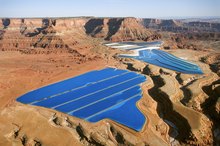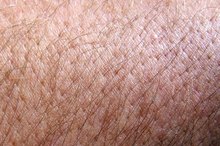Wild Parsnip Cures
Wild Parsnips are an alien invasive species, carried to America from Europe and Asia and spreading across much of the northern United States and parts of Canada. While the roots of wild parsnips are edible, the green stems, and leaves contain a chemical called psoralens which cause phyto-photo-dermatitis. When the plant’s juices come in contact with the skin, and are exposed to ultraviolet light, it results in severe burns, scaled areas on the skin, blisters and long-term discoloration.
Prevention
If you have come in contact with wild parsnip get out of the sun and wash the affected skin immediately 1. Flush the skin with large amounts of water without rubbing. Then use soap on the skin to remove residue. Do not rub with a washcloth, which could force the burning chemicals deeper into the skin. Use cold water to wash away the chemical residue, both humidity and warmth will open the pores of the skin and spread absorption. Similarly, remaining outside in the humidity and sweating will increase absorption.
- If you have come in contact with wild parsnip get out of the sun and wash the affected skin immediately 1.
- Use cold water to wash away the chemical residue, both humidity and warmth will open the pores of the skin and spread absorption.
Immediate Treatment
How Long Does It Take to Heal a Second Degree Burn?
Learn More
When you have parsnip induced dermatitis, the first line of treatment is to relieve the physical discomfort. Cover the affected skin with a cool damp cloth. Lay the cloth over the affected area, but avoid rubbing and scrubbing motions which might further irritate the skin. In some cases, blisters will form. Keep the area covered to prevent blister rupture for as long as possible. This will protect the injured area while new skin is forming and seal out infection.
- When you have parsnip induced dermatitis, the first line of treatment is to relieve the physical discomfort.
- Lay the cloth over the affected area, but avoid rubbing and scrubbing motions which might further irritate the skin.
Open Blisters
Treat open sores to prevent infection. Clean the sores with soap and cool water. Apply an antibiotic ointment with painkiller and a sterile bandage to keep contaminants out. Change bandages twice a day or as needed to keep the area clean and dry.
- Treat open sores to prevent infection.
- Clean the sores with soap and cool water.
Extreme Injuries
How to Remove Potassium Permanganate From Hands
Learn More
In cases where blisters get large enough to pop and weep rapidly after exposure, adding Domeboro powder to ice compresses can dry out the blisters and give relief. Doctors can also give extremely burnt patients cortisone steroid shots to ease itching and burning.
Long-Term Effects
If left untreated, the skin discoloration, or hyperpigmentation caused by the parsnip exposure can last for up to two years. There are a number of treatments for hyperpigmentation including hydroquinone, hydroxy acids, pulsed light treatments, laser resurfacing and microdermabrasion. These treatments are expensive and do not always completely restore normal coloration to the skin. Discuss treatment options with a medical professional.
- If left untreated, the skin discoloration, or hyperpigmentation caused by the parsnip exposure can last for up to two years.
- There are a number of treatments for hyperpigmentation including hydroquinone, hydroxy acids, pulsed light treatments, laser resurfacing and microdermabrasion.
Related Articles
References
- “The Herald Journal”; Wild Parsnip Invades Wright County; Lynda Jensen; 2007
- Wisconsin Natural Resources: Burned By Wild Parsnip
- “Cornwall Free News”; Earth Matters – Wild Parsnip; Jacqueline Milner; 2010
Writer Bio
Misty Barton has been working in the fields of composition and journalism for over 10 years. She has a Bachelor of Science in English education and a Master of Arts in English and composition. She has written for various online publications including a blog that specifically addresses the concerns of work-at-home mothers.






